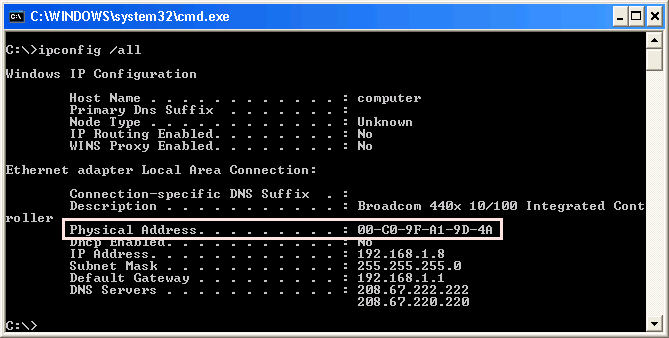A MAC address is hard-coded (burned in) on the network interface controller (NIC) of the Physical layer device attached to the network. Each MAC address must be unique and use the following format:
- Consist of 48 bits (or 6 bytes).
- Displayed by 12 hexadecimal digits (0 through 9, A through F).
- First six hexadecimal digits in the address are a vendor code or organizationally unique identifier (OUI) assigned to that NIC manufacturer.
- Last six hexadecimal digits are assigned by the NIC manufacturer and must be different from any other number assigned by that manufacturer.
Example of a MAC address: 00:00:07:A9:B2:EB The OUI in this example is 00:00:07.
The broadcast address value is FFFF.FFFF.FFFF.
Framing and Duplex Types
802.3 frame information and parameters are as follows:
- The data-link header portion of the frame contains the Destination MAC address (6 bytes), Source MAC address (6 bytes), and Length (2 bytes).
- The Logical Link Control portion of the frame contains Destination Service Access Point (DSAP), Source Service Access Point (SSAP), and Control information. All threeare 1 byte long. The Service Access Point (SAP) identifies an upper-layer protocol such as IP (06) or IPX (E0).
- The Data and cyclical redundancy check (CRC) portion of the frame is also called the data-link trailer. The Data field can be anywhere from 43 to 1497 bytes long. The frame check sequence (FCS) field is 4 bytes long. FCS or CRC provides error detection.
Bridges and switches examine the source MAC address of each inbound frame to learn MAC addresses.
Switches are multiport bridges that use ASIC hardware chips for frame forwarding. Dedicatedbandwidth enables the switch port to guarantee the speed assigned to that port. For example, 100Mbps port connections get 100Mbps transmission rates.
Hubs use half-duplex technology. Switches can be set up for full duplex.

